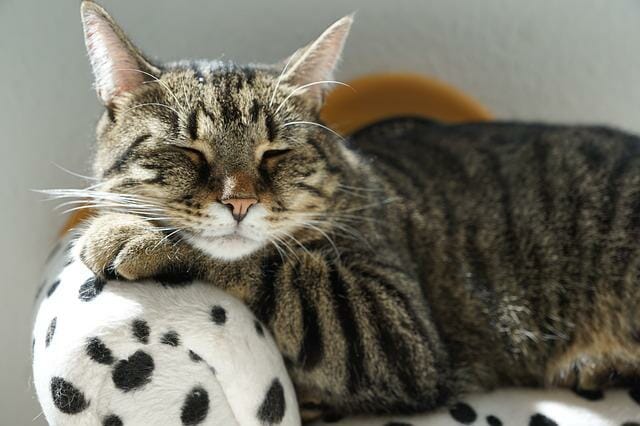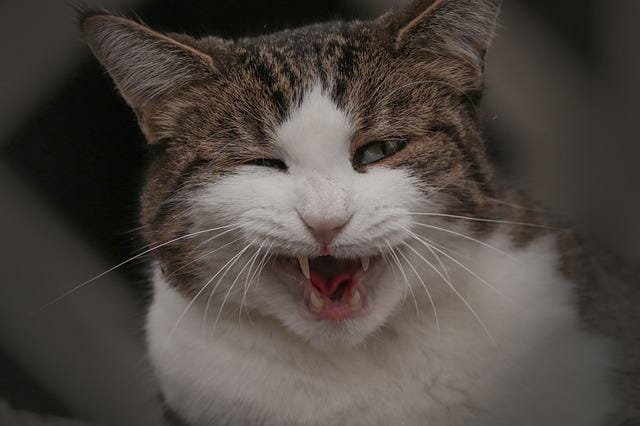Do Cat Teeth Grow Back: Everything You Need to Know in Taking Care of Your Cat’s Teeth
Cat teeth grow back, but only after losing their baby (deciduous) teeth. Like humans, cats have two sets of teeth in their lifetime: baby teeth and adult teeth. Baby teeth emerge when the kitten is about three weeks old and fall out when the kitten is around 3.5-4 months old.
The adult teeth then grow in to replace the baby teeth. However, if a cat loses an adult tooth due to injury or disease, it will not grow back. In such cases, it is important to consult a veterinarian to determine the best action to maintain the cat’s dental health.


Table of Contents
Ways to Take Care of Your Cat’s Teeth
Regular Dental Check-Ups
Regular dental check-ups can detect dental problems early before they become more serious. For example, if your cat has periodontal disease, it can be treated early to prevent it from becoming more severe. Dental check-ups allow your veterinarian to identify potential dental problems and recommend preventive measures. This may include a special diet, dental treats, or regular tooth brushing.
Even with regular brushing and care, your cat’s teeth may require professional cleaning. For example, a professional dental cleaning can help remove plaque and tartar buildup, which can contribute to tooth decay and gum disease.
Dental problems can be painful for cats, and regular check-ups can help address any pain promptly. This can improve your cat’s overall quality of life and prevent more serious health problems from developing. Also, dental health is closely tied to your cat’s overall health. Maintaining good dental health can help prevent other problems like heart disease, kidney disease, and respiratory infections.
Brush Your Cat’s Teeth
Brushing your cat’s teeth helps remove plaque and tartar buildup on their teeth. Plaque is a sticky film of bacteria that forms on the teeth, and if left untreated, it can harden into tartar, which is more difficult to remove. Plaque and tartar can cause gum disease, tooth decay, and other dental problems.
Periodontal disease is a common dental problem in cats. It is caused by the buildup of plaque and tartar on the teeth, leading to inflammation, bleeding gums, and tooth loss. Brushing your cat’s teeth can help prevent periodontal disease by removing plaque and tartar before it can cause problems.
Brushing your cat’s teeth can also help freshen its breath. Bacteria in the mouth often cause bad breath, and brushing can help remove these bacteria and improve the smell of your cat’s breath. In addition, brushing your cat’s teeth can be a bonding experience for you and your cat. It can strengthen your bond with your cat and provide a positive experience for both of you.
Provide Dental-Friendly Toys and Treats
Dental-friendly toys and treats are designed to encourage your cat to chew and scrape its teeth against them. This can help remove plaque and tartar buildup from their teeth, reducing the risk of gum disease and tooth decay.


Many dental-friendly toys and treats are designed to stimulate your cat mentally, which can help keep them entertained and prevent boredom. This can reduce the likelihood of destructive behavior and other boredom-related problems.
Chewing can be a natural stress reliever for cats. Providing your cat with dental-friendly toys and treats can help reduce stress and anxiety, positively impacting its overall health and well-being. Many dental-friendly treats are also made with ingredients that provide nutritional benefits for your cat, such as vitamins and minerals. This can help support your cat’s overall health and well-being.
Monitor Your Cat’s Diet
A balanced and nutritious diet is important for your cat’s overall dental health. Calcium, vitamin D, and phosphorus are essential for strong and healthy teeth. Certain foods, such as dry kibble or dental-specific diets, can help reduce plaque and tartar buildup on your cat’s teeth. These foods are designed to be crunchy, which helps scrape away plaque and tartar as your cat chews.
Monitoring your cat’s diet can help control its calorie intake and prevent obesity, which can lead to dental problems such as periodontal disease. Also, a diet that includes wet food or moist treats can help promote hydration in your cat, which is important for dental health. In addition, dehydration can lead to dry mouth, tooth decay, and gum disease.
Watch for Signs of Dental Problems
Dental problems can be easier to treat when they are caught early. By watching for signs of dental problems, you can catch them before they become more serious and require more extensive treatment. Dental problems such as gum disease and tooth decay can be painful and uncomfortable for your cat. By watching for signs of dental problems, you can help prevent your cat from experiencing unnecessary pain.
Also, dental problems can lead to tooth loss, affecting your cat’s eating ability and negatively impacting its quality of life. By watching for signs of dental problems, you can help prevent tooth loss and ensure your cat can continue eating and enjoying their food.
Addressing dental problems early can prevent them from becoming more serious and requiring more extensive (and expensive) treatment. This can save you money in the long run.
What to Do if Your Cat’s Teeth Got Damaged


If your cat’s teeth are damaged, it’s important to take action to prevent further damage and discomfort. The first step is to contact your veterinarian. They can examine your cat’s teeth and determine the best course of treatment. If your cat’s teeth are damaged, they may be sensitive or painful. Avoid feeding hard or crunchy foods, which can further damage their teeth or cause discomfort.
Your veterinarian may recommend various treatments depending on the severity and type of damage to your cat’s teeth. This may include dental cleaning, extractions, or other procedures. Follow their recommendations to ensure your cat’s teeth are properly cared for.
If your cat is experiencing dental problems, it may have difficulty eating or drinking. Monitor their habits and make any necessary adjustments to their diet or feeding routine. Also, your veterinarian may recommend pain relief medication if your cat is experiencing pain or discomfort. Follow their instructions and administer the medication as directed.
